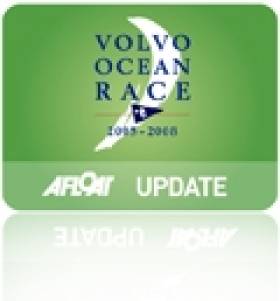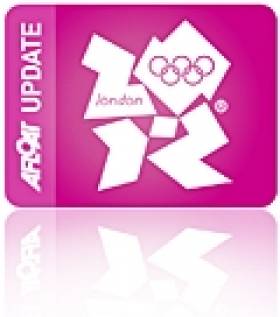Displaying items by tag: water polo
#TRY BOATING – As well as the Round the World Racers on show at the Volvo Ocean Race 2011- 2012 Grand Finale in Galway (30th June to 8th July 2012) there's also a chance to get on the water have a try at Sailing, Windsurfing, Paddle Boarding, Sea kayaking and Water Polo.
Get on board a Galway Hooker, Donegal Drondheim, Achill Yawl and Arab Dhow. See what it's like on board a modern racer cruiser. Accessible sailing for those with restricted mobility are also catered for.
Volvo Youth Academy
• Try Sailing on a Ludic 18 foot sailing dinghy with an experienced local sailor in a safe environment. Just visit the Race village any day 1100 to 1700 and book a place. Free age 10+.
• Website www.volvooceanracegalway.com
Ocean Youth Trust
• Try Sailing on a RS Elite 18 foot sailing keel boat with an experienced local sailor in a safe environment. Just visit the Race village from Wednesday 4th July 1100 to 1900 and book a place. Free age 12+.
• More information from Bronagh Cappa-Campbell email [email protected] telephone 00442890453062. Website www.oyti.org
Galway Bay Sailing Club
• Try Sailing on a Vision 16 foot sailing dinghy with an experienced local sailor in a safe environment. Just visit the Race village any day 1100 to 1700 and book a place. Free Age 10+.
• Tried the sailing want to take the helm then the Taste of Sailing is for you. Then book a place on the half day Taste of Sailing Course and get your Irish Sailing Association certificate.
• Morning and Afternoon Sessions aged 10+.
• Multiple half days can be booked to make up a longer course.
• Take the helm and learn to sail on the 12 foot RS Feva double handed dinghy either on the waters of Lough Atalia or off the beach at the Galway Ocean Sports Club.
• Cost €10 per half day session booking in advanced from Thomas Mills 087 7754514.
• Email [email protected] website www.gbsc.ie or at the Race Village.
Bow Waves
• Try Sailing on a Laser 16 foot sailing dinghy with an experienced local sailor in a safe environment. Just visit the Race village any day 1100 to 1700 and book a place. Free Age 10+.
• Tried the sailing want to take the helm then the Taste of Sailing is for you. The book a place on the half day Taste of Sailing Course and get your Irish Sailing Association (ISA) certificate.
o Morning and Afternoon Sessions aged 10+.
o Multiple half days can be booked to make up a longer course.
o Take the helm and learn to sail on the 12 foot Topper Topaz double handed dinghy either on the waters of Lough Atalia or off the beach at the Galway Ocean Sports Club.
o Cost €10 per half day session booking in advanced by telephone 091560560 or 0878077177.
o Email [email protected] website www.bowwaves.com or at the Race Village
Accessible Sailing
• Sailing session for people with disabilities.
• The Irish Disabled Sailing Association, ISA, GBSC and Even Keel have teamed up to bring a fleet of 7 boats which will cater for different needs.
• Morning and Afternoon Sessions. Free aged 8+.
• Booking in advance by Email [email protected] by telephone 0878800744. Websites www.sailforce.ie, www.sailing.ie, www.gbsc.ie and www.theevenkeel.com
Galway Hooker Association
• Get on board a traditional Galway Hooker to get to know the ropes from the sheets and the canvas from the blocs.
• On the Quay side all week.
• More information from Padraic de Bhaldraithe email [email protected] or telephone 0876591904. Website www.galwayhookerassociation.ie
Rusheen Bay Windsurfing
You prefer to do some sailing standing up the Taste of Windsurfing is for you. Then book a place on the half day Taste of Windsurfing and get your Irish Sailing Association certificate RBW.
o Afternoon sessions weekends and evening Sessions all week.
o Multiple half days can be booked to make up a longer course.
o Stand up and sail on safe waters of Rusheen bay aged 12+.
o Cost €20 per half day session booking in advanced from Danny Mulryan 0862605702.
o Email [email protected] website www.rusheenbay.com or at the Race Village.
Try Sea Kayaking with Burren Outdoor Education Centre and Kayakmor
If you prefer going for a paddle then explore the shore line from the docks to Hare Island in a sea Kayak.
• Morning and Afternoon Sessions with Burren Outdoor Education Centre
o Fee €5 aged 10+ at the Race Village.
o More information from Joanna McInerney 087 2229459
o Email [email protected] website www.burrenoec.com
• Evening Sessions
o Fee €5 aged 10+ at the Race Village.
o More information from Jim Morryissey 087 7565578
o Email [email protected] website www.kayakmor.com
Puma Stand Up Paddle Boarding
You can now go padding standing up Puma are bringing their latest carbon fibre boards for you to try.
• All day sessions aged 12+ free.
• Off the prom at Palmers Rock Salthill.
• More information from Mark Paaluhi of Puma on 00- 310-927-1288
• Email [email protected] website www.puma.com
Corrib Water Polo and Swim Club Try Water Polo
I f you really want to play ball and get up to your neck in water have a go at the try water polo session.
• Wednesday 4th July 1730, aged 15 and under free.
• Must be able to swim a width.
• Kingfisher Club NUIG
• More information from Andy Flanagan
• Email [email protected]
British Water Polo Team to Train in Ireland for London Olympics
Minister Varadkar said today (Thursday) that he is delighted to make this announcement, which highlights the importance of the National Aquatic Centre as a key sporting facility.
Minister Varadkar said: 'The British team was so impressed by the National Aquatic Centre when they came here in March, they have decided to come back to Ireland to train for the London Olympics'.
"The fact that the British water polo team has chosen Ireland, and the National Sports Campus in Blanchardstown in particular, for its pre-Olympic training demonstrates what a magnificent world class facility we have at the National Aquatic Centre."
The British water polo team will use the NAC for a two-week training session in July 2012, immediately before the London Olympics. The development is a direct result of the international matches held at the NAC earlier this year, between the British and Hungarian water-polo men's senior squads.
The news was also welcomed by Minister of State for Tourism & Sport Michael Ring, who chairs the Inter-Agency Committee in the Department of Transport, Tourism & Sport which is promoting Irish involvement in the London Olympics.
Minister Ring said: 'I'm delighted that the Committee's hard work is once again bearing fruit. We have already secured the US Olympic synchronized swimming squad and the British paralympic swimming squad, which will both be using the NAC as a training base for the Olympics'.
"The Inter-Agency Committee will work right up to the Olympics. As well as seeking to attract national teams to train in Ireland, we are staging Irish cultural events in London, and promoting Ireland as a destination for Londoners hoping to escape the Olympics."






























































